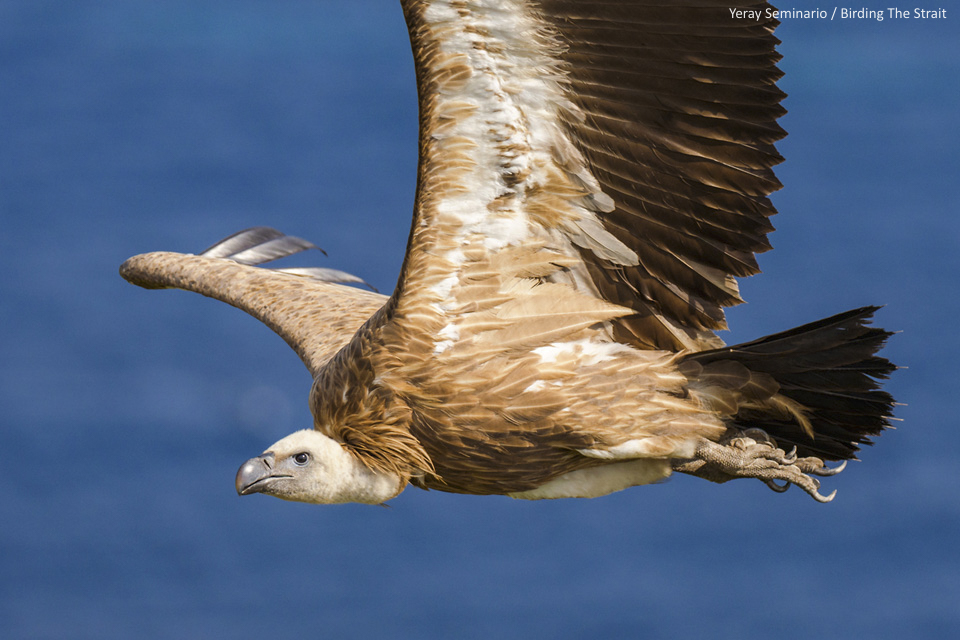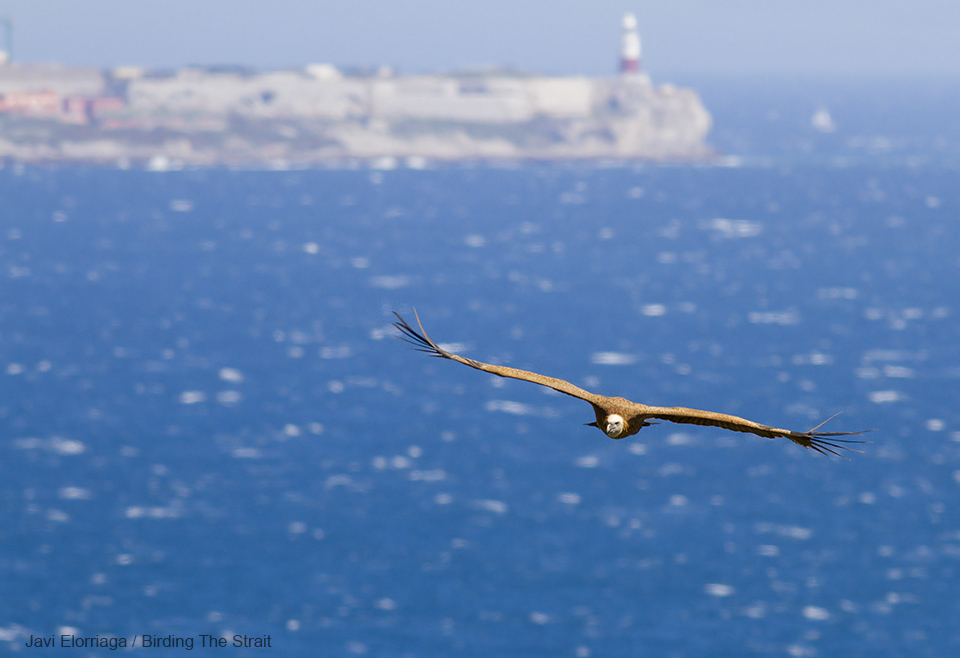
Under suboptimal weather conditions, like strong crosswind and rain showers, the narrow sea crossing that separates Africa from Europe at the Strait of Gibraltar may present a major obstacle to migrating raptors. This is particularly true for the Eurasian Griffon, the largest soaring migrant in the area. In fact, the mere 14.5 Km that separate both continents is at times an insurmountable barrier, causing an undetermined number of vultures to fall into the sea every spring.
Instinct of survival
Once in the water, Griffons show an impressive instinct of survival and use their large wings as paddles in a desperate attempt to reach the shore. Except in the rare occasions when fallen Griffons are rescued by passing vessels, their fate is normally fatal. This is a highly dramatic scene and a brutal example on the forces of natural selection that we observe every spring in the Strait of Gibraltar.

But! Last 1st of May we witnessed the absolutely exceptional and unbelievable case shown in the following video:
With moderate westerly winds a group of 36 Griffons undertook the sea-crossing of the Strait. The crossing started on top of the Djebel Mousaa in Morocco, and headed to Punta Carnero in Spain. As they approached the European shore, we saw the kettle soaring in a thermal updraft over the Ocean. This is a rather infrequent event as thermal updrafts do rarely occur over water bodies. Nonetheless, the thermal seemed to suddenly dissipate and vultures did rapidly lose height. In a strenuous active flight, most individuals managed to safely reach the continent. Two vultures, however, did not have the strength to go on and hit the water!
Attack of the gulls
Their efforts to stay afloat an reach the shore “swimming” were hampered by the ruthless attack of Yellow-legged Gulls. This had us on tenterhooks for over 15 minutes. We finally saw one of them drowning while, to our surprise, one of them skilfully reached a rocky islet near the shore! After some 45 good minutes spreading its wings to the sun in a cormorant fashion, and boosted by a timely gust of wind, the vulture took off again and completed the intercontinental flight. This caused cheers and applause from all present observers!
Indeed, because of this kind of observations we will never have enough of raptor migration in the Strait of Gibraltar! Contact us if you want to arrange a trip to experience the Griffon Vulture migration.